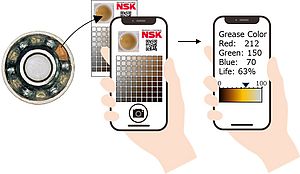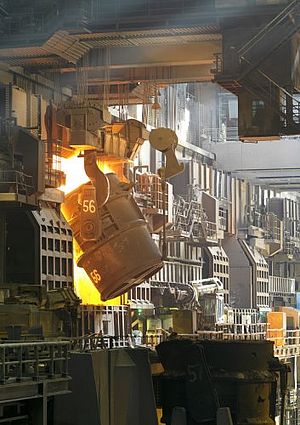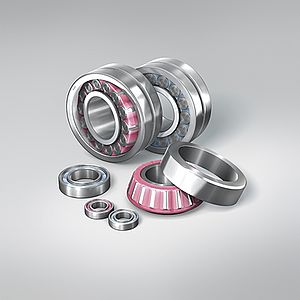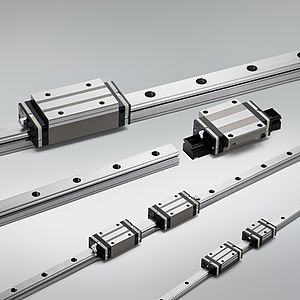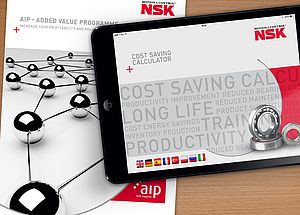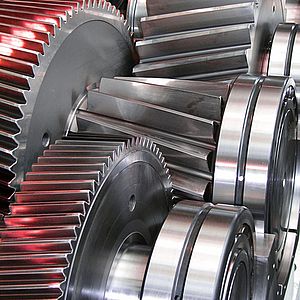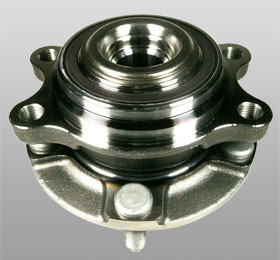Today’s generation of trains is required to go faster than ever before, and to travel much longer distances without maintenance. These twin demands place added stress on traction motors and the rolling bearings, which are fundamental to their reliable operation.
On many new trains, inverter controlled AC traction motors are now employed. The recent progress in electronic power technology has contributed greatly to this trend. Compared with a conventional DC motor, an AC unit has neither a commutator nor brushes, so high speed and maintenance free running are both possible.
With the adoption of AC traction motors, longer maintenance free intervals are required for traction motor bearings. Operators are looking for maintenance free running intervals of 2- million kilometres for future generations of conventional trains. This compares with intervals of 0.9M Km for current generation trains equipped with AC traction motors.
Traction motor bearings operate under severe operating conditions, including high radial loads, high impact loads and high speeds. A major obstacle to achieving extended maintenance free intervals is electrical erosion. This occurs when ‘stray’ electric current flows through motor bearings to earth. The result is damage to the bearing, the extent of which depends upon the magnitude of the current and the duration of the conditions. The damage is usually in the form of craters on the bearing raceway and rolling element surfaces, resulting in premature bearing failure.
This phenomenon has been known for some considerable time. However, recent designs and extended maintenance interval requirements of rolling stock have increased the importance of preventing it. NSK has developed a range of insulated bearings for traction motors to combat the problem.
To prevent electrical corrosion NSK has developed two processes, one using ceramics, the other a PPS (polyphenylene sulphide) resin, both of which are used to coat the outer diameter and end face surfaces of the bearing outer ring.
Ceramic Coated Bearings For High Speed Trains
The ceramic coating is plasma sprayed sprayed on to the bearing outer ring. The coating is mainly alumina (AL2O3) over a bond coat to improve its adhesion to the bearing steel.
Following the plasma spraying process, the bearings are coated with a special acrylic resin. The resin impregnates the pores of the ceramic coating and seals the surface to eliminate the harmful effects of humidity. Its special qualities also prevent significant deterioration of electrical resistance when the bearings are exposed to strong alkaline washing liquid (pH 12.7) at high temperatures (80oC). This occurs during disassembly and washing in some rolling stock maintenance shops.
The effectiveness of NSK’s ceramic process is being proven daily on latest generation Shinkansen Bullet trains. As a result of these successes, the ceramic-coated bearings are being supplied across the world for traction motors used in the latest generation of fast electric locomotives.
Reinforced Resin Coating for New-Generation Conventional Trains
The second insulation material developed by NSK; a glass fibre reinforced PPS resin, is applied by injection moulding. While the physical properties of PPS are slightly inferior to alumina, the resin material is less expensive and tends to be used on new generations of conventional trains equipped with traction motors.
At the same time as NSK’s new coating processes are protecting bearings against electrical corrosion, the material specification and mechanical design of the bearings themselves are playing a major role in ensuring reliable and safe operation of railway vehicles. In terms of materials, all traction motor bearings (cylindrical roller and ball bearings) use the latest high purity steels to give improved fatigue life. Special tempering operations are undertaken to enable dimensional stability at the relatively high operating temperature experienced in some traction motor applications.
Regarding mechanical design, the latest advances in cage manufacturing technology have enabled a one piece, rolling element guided cage to be used in the roller bearings. Finite element analysis has resulted in optimum roller pocket design giving higher strength and benefits for lubricant flow.
The final element in NSK’s approach to traction motor bearings is lubrication. For many years a standard Lithium based grease has been the lubricant specified for use in DC motor bearings. With the trend toward the replacement of DC traction motors with AC motors, NSK has been instrumental in the development of a lithium-complex soap grease to achieve longer life. This new grease, Unimax R No 2, is used extensively in traction motor bearings for Bullet 300 series trains, as well as newly manufactured trains for conventional railroad use. The Unimax R No 2 grease has shown up to three times the life of the grease previously used.







